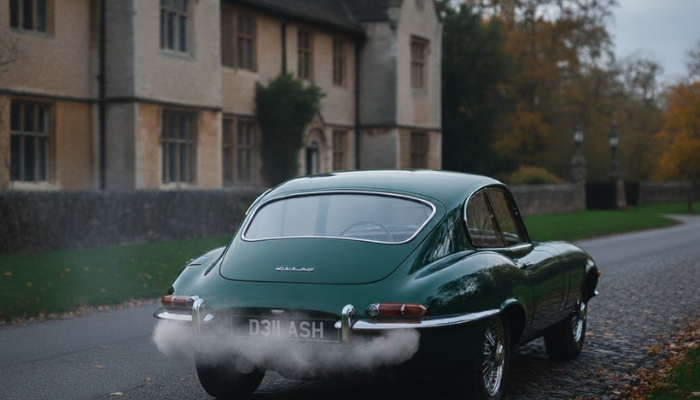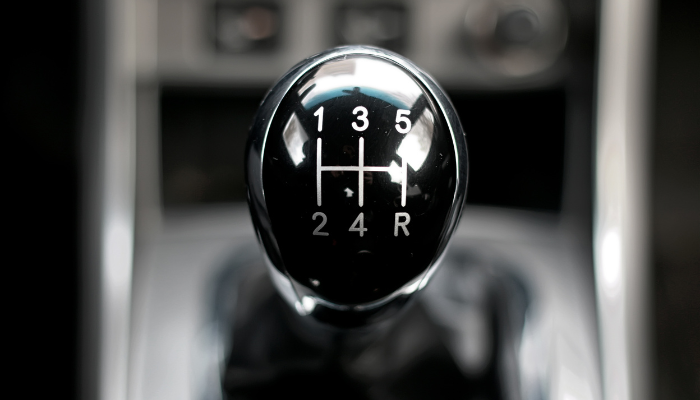It might seem odd to talk about “greener motoring” and classic cars in the same breath. After all, many of us are drawn to roaring engines, petrol-heads’ nostalgia, and that deep-throated exhaust note. But here’s the twist: recent data shows that even as the number of classics on UK roads has more than doubled over the last decade, average emissions per vehicle have actually dropped. This means our beloved tin-tops and grand tourers are increasingly joining the modern motoring era, not as polluters left behind, but as part of a surprisingly efficient slice of the automotive world. And if you own a classic, that’s good news for the environment, for regulatory pressure and for your driving freedom.
The Numbers Behind the Trend
So what’s actually happening? In 2013, there were just under 467,000 vehicles classed as classics on UK roads. Fast-forward to the end of 2024 and that figure had soared to over 1 million.
Yet, while the number of classics has more than doubled, emissions from the segment have risen by only around 34 %.
And crucially, the average emissions per vehicle have fallen from 899 kg of CO₂e in 2013 to 757 kg in 2024.
To give that some context, classic cars now account for just about 0.30% of all UK transport emissions.
According to one estimate, driving a classic for a year gives you roughly the same carbon footprint as an average household emits in a week and a half.
That’s not to say classics are clearing forests or saving polar bears single-handedly, but the narrative that “old cars = massive environmental damage” is beginning to look less accurate.
Why Are Classic Car Emissions Falling Per Car?
You might be asking: how is this possible? How can emissions per vehicle drop while more classics are on the road? There are a few key reasons.
One big factor is the influx of younger classics. Cars from the late 1970s, 1980s and early 1990s, with improved engines, fuel injection, better manufacturing standards and more precise engineering, are increasingly classed as classics. These younger entries generally emit fewer pollutants than cars from the 1950s or 60s.
Maintenance and usage matters too. Classic owners tend to drive their cars more carefully, more sparingly and to keep them well-maintained. Many cover just ~1,500 miles per year (or even less). A classic that sits polished in a garage most of the time is hardly putting out daily commuting emissions.
And add into that: fewer rug pulls and more savvy restorations. With rising awareness, many restored vehicles now run better than they ever did originally, optimised carburettors, modern seals, EVEN sympathetic electronic upgrades. These small improvements do help.
So while each classic might still be less efficient than a brand-new Euro 6 motor, the shift is enough to make the segment as a whole far less of a burden than you’d expect.
Implications for Classic-Car Owners
This isn’t just comfort for our conscience-sake, it has genuine implications for classic owners and the wider community.
Regulatory benefit: With emissions falling and classic usage well understood, regulatory bodies may view historic vehicle ownership more favourably. For example, if your classic is seldom used and emits less than anticipated, the case for exemptions (like ULEZ or LEZ zones) strengthens.
Value & investment: One long-standing worry for owners has been “will my classic become a liability” in a low-emission future? With improved numbers and scrutiny showing favourable results, you can confidently argue that your vehicle is less of an environmental sinner than assumed, and that should bolster value and desirability.
Maintenance-first mindset: The data reinforces a key trait of the classic-car community: that good maintenance and sensible use make a big difference. For owners, the takeaway is clear, keep the car tuned, check tyres, drive smart, because it pays off both in emissions and longevity.
Community narrative: For clubs, showing these statistics helps shift the voice from “we’re nostalgic petrol-heads” to “we’re heritage preservationists, driving responsibly.” That’s important for how the hobby is perceived in society and by policymakers.
What Owners Can Do to Keep Classic Car Emissions Low & Heritage High
So you’ve got a classic, and you want it to sit perfectly in the “greener” category as well as being stunning on the driveway. Here’s how.
Smart maintenance: A well-tuned engine, correct air-fuel mixture, new ignition components, properly inflated tyres, it all adds up. It’s not about making it a modern race car but ensuring it runs as it should.
Usage patterns: When you drive, make the miles count. A long enjoyable run is generally more efficient (and more fun) than idling around town. Many classics are driven less, but better.
Selective upgrades: While purists might baulk, installing discreet modern parts (e.g., electronic ignition, improved carb tuning, better brakes) can reduce fuel use and emissions while retaining original feel.
Consider sympathetic EV swaps: For some owners, converting to electric or hybrid might appear sacrilege, but when done correctly (and with identity in mind) the carbon impact goes down even further. That said, keep in mind authenticity and registration issues.
Documentation: Keep logs for fuel use, mileage, service history. When you can show your classics are well-used, well-maintained and sensibly driven, you’re in a stronger position with insurers, future buyers and regulators.
The Bigger Picture, Can Classics Continue to Be Part of a Sustainable Future?
There’s a larger question: can classic cars remain relevant and responsible in an age of EVs, stricter regulations and changing attitudes? The signs suggest yes.
Firstly, consider the concept of “embedded carbon.” A classic car’s manufacturing footprint happened decades ago. Re-using, restoring and operating a vehicle rather than scrapping and re-buying is inherently more sustainable in the long term. One report claimed that the average classic car emits 563 kg of CO₂ a year, whereas the average new car’s production alone already sits at 6.8 tonnes.
One EV, from production to disposal, can still carry a carbon “debt” of up to 26 tonnes.
Secondly, as more modern classics join the rank of vintage vehicles, the fleet as a whole becomes more efficient and less polluting. Cars from the 1980s and ’90s already benefit from better engine design, improved emissions controls and more reliability, the trickle-down effect of modern tech.
But it’s not all rosy. Classics still lag modern cars in local pollutant control, older vehicles typically don’t have catalytic converters or particulate filters, meaning NOₓ and unburnt hydrocarbons can be higher per mile.
Plus, the very niche usage of classics means they won’t form the bulk of future sustainable transport. They remain a hobby and heritage asset, not a mass mobility solution.
Yet; when you compare the numbers, the overall environmental footprint of the classic car community is tiny. As one report put it: “Driving a classic is no more impactful than drinking three cups of coffee a day.”
My Classic, My Responsibility
If you’re reading this and you own, restore or admire classic cars, this is your moment. We’re part of a story where heritage and environmental sense align. It’s about saying: yes, I love the sound, I love the style and I love the heritage, and yes, I’m going to treat this machine with respect.
When you fire up your engine this weekend, think of it not just as nostalgia but as a well-maintained part of our motoring legacy. When you polish that chrome, check that tyre, drive that scenic route, you’re actively choosing preservation over disposal. So yes, your classic might emit more per mile than a new ultra-efficient car, but when you factor in miles used, life span, cultural value, and how well you treat it, you’re really doing something quite sensible.
Wrapping Up
So, there you have it. The classic car world isn’t just surviving in a low-emission age, in many ways it’s adapting, improving and staying relevant. From younger entries joining the vintage ranks, to better maintenance, smarter use and better engineering: what might once have been automatically dismissed as “bad for the planet” is increasingly proving otherwise.
Whether you’re polishing a Series 1 Jaguar, prepping a late-’80s BMW or planning your next rally-run in a 1970s Volvo, enjoy it with the knowledge that you’re part of a thoughtful community. And when someone says to you “Are old cars bad for the environment?” you can smile, fire up the engine, pull away responsibly, and answer: “Actually, no. Not really.”







Leave A Comment